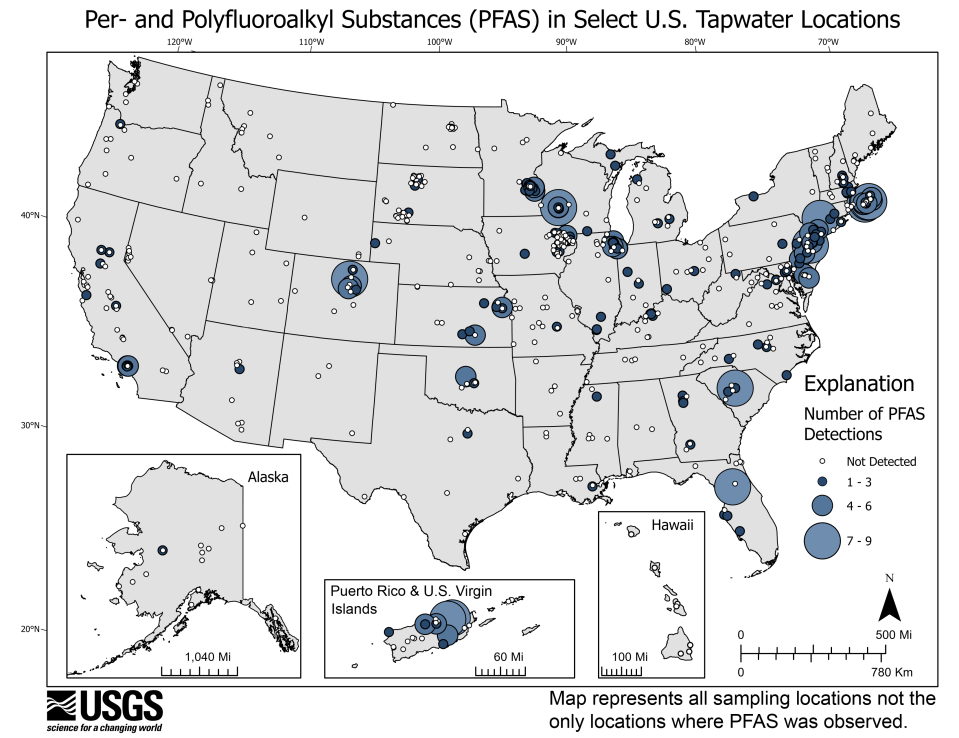What you need to know about toxic 'forever chemicals' and the Indiana legislature
Often referred to as "forever chemicals," PFAS are widely understood to be toxic to public health and the environment. But Indiana lawmakers appear to think a little differently.
A new bill proposed in the legislature would change the definition of PFAS — but only in Indiana — to say some PFAS are safer than others.
Here's what you need to know about what is Indiana doing why it matters?
What are PFAS?
PFAS, which stands for per- and polyfluoroalkyl substances, are widely used because they are resistant to heat, stains, grease and water. With that, PFAS have been used in clothing, carpets, other fabrics, non-stick cookware, food packaging, cosmetics and more.
They take thousands of years to break down and often find their way into the bodies of humans and animals, leading to harmful health effect. A report from the Centers for Disease Control and Prevention found PFAS in the blood of more than 97% of Americans.

What would Indiana's propose law maan?
As proposed, House Bill 1399, would change the definition of PFAS in Indiana only. Essentially, as many as 5,000 chemicals the rest of the world recognizes as PFAS would no longer be considered toxic forever chemicals.
This would prevent future regulations against all of the newly excluded PFAS. Proponents say the change is needed to protect essential uses of PFAS in things such as medical devices and semiconductors. Critics say it will put Hoosiers at risk.
Has Indiana led any PFAS-related research?
A pair of scientists in Indiana have led important research at the national level on PFAS. Marta Venier, an environmental chemist and Indiana University, found harmful PFAS in a variety of products including food packaging, cosmetics and school uniforms — all representing forms of potential exposure.
Graham Peaslee of the University of Notre Dame focused his research on firefighter gear. Both the inner and outer layers of firefighter suits are composed of the "safer" and “stable” types of PFAS, but he found the chemicals don’t all stay in the gear, as industry experts suggest, and put firefighters at risk.
What other steps has Indiana taken on PFAS?
Indiana lawmakers took the opposite approach last year, passing a law requiring firefighter gear to have a label saying it contains PFAS. Lawmakers also established a biomonitoring program for firefighters to have their blood tested for PFAS chemicals.
In 2022, Indiana launched a program to help dispose of firefighting foam that contains PFAS and is encouraging fire departments to switch to PFAS-free alternatives. These steps positioned Indiana a national leader in addressing the dangers of PFAS.
Call IndyStar reporter Sarah Bowman at 317-444-6129 or email at sarah.bowman@indystar.com. Follow her on Twitter and Facebook: @IndyStarSarah. Connect with IndyStar’s environmental reporters: Join The Scrub on Facebook.
IndyStar's environmental reporting project is made possible through the generous support of the nonprofit Nina Mason Pulliam Charitable Trust.
This article originally appeared on Indianapolis Star: Toxic PFAS chemicals are in all our blood. Here's what that means

